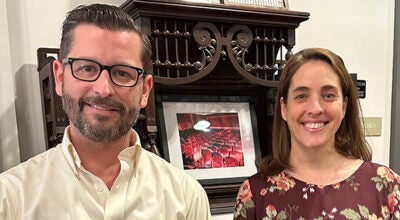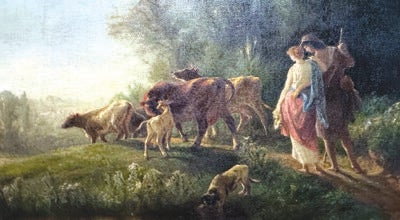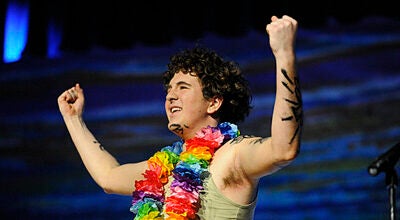Canvasback duck painting selected as new stamp
Published 7:40 pm Thursday, January 25, 2018

- JUDGMENT: Roger Sweeny, general curator for the North Carolina Zoo, was one of the five judges who determined the top-five entries at the 2018 North Carolina Waterfowl Conservation Stamp Print competition. (Mike Voss/Daily News)
Garrett Jacob ‘s painting of a canvasback duck won the 2018 North Carolina Waterfowl Conservation Stamp Print competition held at the Washington Civic Center on Tuesday.
Jacobs won the contest in 2016, becoming the first African-American to do so. Jacobs lives in Orlando, Fla.
“I was shocked. I really was shocked. I was on the road when they (contest officials) called. My wife just had surgery. I just did a U-turn. I wanted to go home and tell her,” Jacobs said Tuesday afternoon. “I’m ecstatic. She’s ecstatic. It was just really good news at the right time.”
Rounding out the top-five entries in the contest were Broderick Crawford, second place; John Brennan, third place, Jeffrey Klinefelter, fourth place and Guy Crittenden, fifth place. Each of them has either placed or won previous North Carolina duck-stamp contests.
Judging the contest were Carl Ferguson, retired from the U.S. Fish and Wildlife Service; Roger Sweeney, with the North Carolina Zoo, John Elliott, a decoy carver; Mick Mickelson, an avid duck hunter and David Gossett, a taxidermist and one of the originators of the East Carolina Wildlife Arts Festival. The duck-stamp contest is a prelude to the festival, which runs Feb. 8-19 in Washington.
“The total number of entries was down just a few, but the quality of the very top of the paintings were as good as ever — the best of the best. They always stand out. They were just as good as they have been for any year. They’re some beautiful paintings,” Gossett said.
This year’s eligible species were tundra swans, blue-winged teal, ring-necked duck, canvasback or bufflehead. Among the 31 artists who submitted entries were two from former federal duck-stamp contest winners, Scot Storm and Richard Clifton, past winners of the North Carolina contest.
This year’s blue-ribbon entry will be used as the artwork for the prints and stamps sold to help pay for North Carolina’s portion of the North American Waterfowl Management Plan, an international agreement aimed at protecting waterfowl and waterfowl habitat. The sales of prints and stamps also support waterfowl research and purchases equipment used in wetlands management.
The artist who submits the winning entry receives $7,000 in prize money and a $300 travel allowance to help him or her attend the unveiling. The top five entries will be unveiled at a Feb. 8 reception at this year’s East Carolina Wildlife Arts Festival.
Publication of photographs of the top-five entries is prohibited until after they are unveiled at the reception.
Jacobs, a wildlife artist since 1980, said his wife’s recovery from major surgery likely would keep him from attending the reception.
The contest is overseen by the N.C. Wildlife Resources Commission and the Washington Tourism Development Authority.






